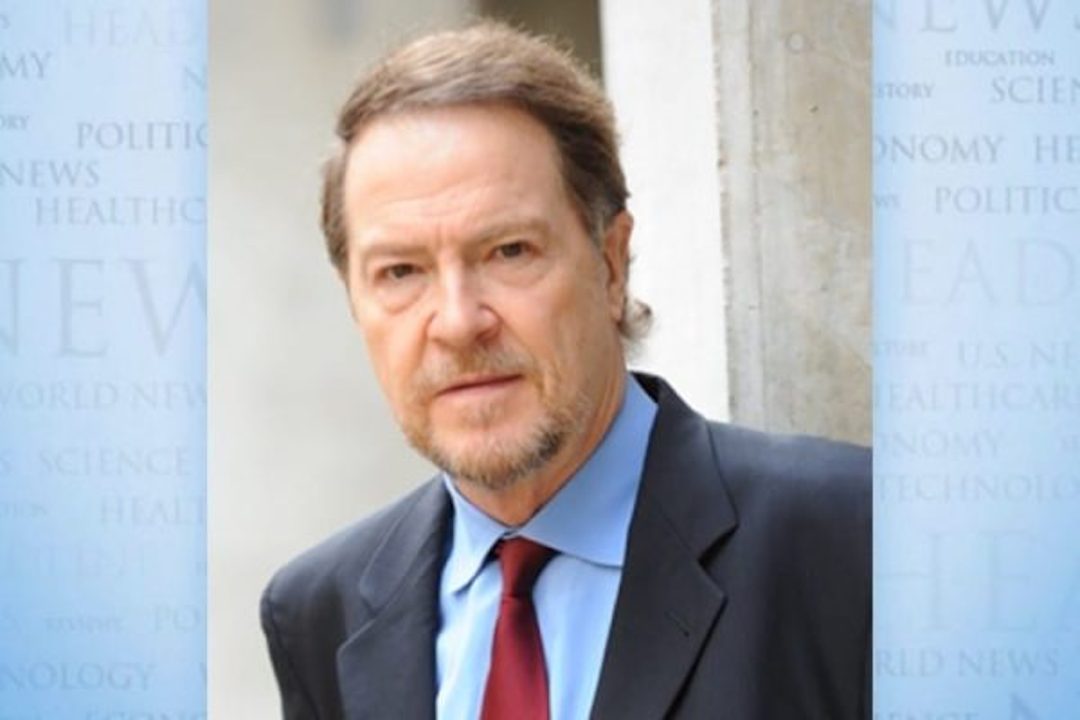
This has all the makings of a constitutional crisis.
According to law professor Amanda Frost, “a constitutional crisis occurs when one branch of government, usually the executive, ‘blatantly, flagrantly and regularly exceeds its constitutional authority — and the other branches are either unable or unwilling to stop it.’”
Consider for yourself.
The president has gone rogue, doubling down on his belief that “I have the right to do whatever I want as president.”
The vice president believes the president should be a law unto himself, i.e., unaccountable to the other branches of the government.
The Republican-controlled Congress appears to be deaf, dumb and blind to the Executive Branch’s blatantly unconstitutional overreaches.
The courts, which have in recent years largely rubber-stamped the government’s power grabs, are ill-prepared to rein in a sitting president who is determined to do whatever he wants, the Constitution be damned.
Meanwhile, the Constitution is still missing from the White House’s website.
This last point is not an oversight.
Rather, it speaks volumes about the priorities of the current presidential administration, which operates as if the rule of law does not apply to itself.
Indeed, while President Trump’s predecessors paid lip service to the rule of law while sidestepping it at every opportunity, Trump has been unapologetic about his intentions to set aside whatever legal, moral or political barricades stand in the way of his end goals.
Rule by fiat — when presidents attempt to unilaterally impose their will through the use of executive orders, decrees, memorandums, proclamations, national security directives and legislative signing statements — is an offense to the Constitution.
It was offensive when Biden did it. It was offensive when Obama did it. And it is just as offensive when Trump does it.
Already, Trump has signed more executive orders in his first month than any other president in their first 100 days.
This is not a sign of strength and leadership. This is a red flag.
In bypassing Congress in order to carry out his ambitious agenda, the Trump Administration risks transforming the executive branch into something akin to the very entities it often criticizes: an overreaching surveillance state, a nanny state that dictates individual choices, and a police state that prioritizes compliance over freedom.
It is particularly telling that while Trump and his Musk-led Department of Government Efficiency (DOGE) are pledging to lay off huge swaths of federal employees, the police state’s martial law apparatus will remain largely untouched.
This way lies totalitarianism, by way of authoritarianism, and those who insist it can’t happen here need to pay better attention.
The following are 15 benchmarks of a totalitarian regime, according to journalist Benjamin Carlson:
- Media is controlled.
- Dissent is equated to violence.
- Legal system is co-opted by the state.
- Power is exerted to prevent dissent.
- State police are directed to protect the regime, not the people.
- Financial, legal, and civil rights are contingent on compliance.
- There is a mass conformity of behaviors and beliefs.
- Power is concentrated in an inner ring of people and institutions.
- Semi-organized violence is permitted.
- Propaganda targets enemies of the state.
- Whole classes of people are scapegoated and singled out for persecution.
- Extra-legal action against internal enemies is condoned.
- Unpredictable and harsh enforcement is used against unfavored classes.
- The language of the Constitution serves as a facade for the exercise of power.
- And all private and public levers of power are used to enforce adherence to state orthodoxy.
To guard against these pitfalls, we must start by understanding the rule of law, and how it functions within our system of checks and balances.
The rule of law is the principle that everyone, including the government — and the president — must obey the law, which is embodied in the U.S. Constitution.
In a nutshell, the Constitution is the social contract — the people’s contract with the government — which outlines our expectations about the role of the government and its limits, a system of checks and balances dependent on a separation of powers, and the rights of the citizenry.
America’s founders established a system of checks and balances to prevent the concentration of power in any single branch. To this end, the Constitution establishes three separate but equal branches of government: the legislative branch, which makes the law; the executive branch, which enforces the law; and the judicial branch, which interprets the law.
Despite Trump’s attempts to rule by fiat, nowhere in the Constitution is the president granted unilateral authority to act outside these established checks and balances, no matter how well-meaning his intentions might be or how worthy the goals (a balanced budget, safety, economic prosperity, etc.).
Allowing the president to bypass established legal procedures in order to prioritize his own power over adherence to the rule of law ultimately undermines the principles of a constitutional government.
Which brings us to the present moment.
With Congress on the sidelines, the momentum is building for a constitutional showdown between the White House and the judiciary.
This is as it should be.
The job of the courts is to maintain the rule of law and serve as the referees in the power struggle between the president and Congress. That delicate balance between the three branches of government was intended to serve as a bulwark against tyranny and a deterrent to any who would overreach.
When all is said and done, however, it is supposed to be “we the people” who hold the real power — not the president, not Congress, and not the courts. As the Tenth Amendment proclaims, “The powers not delegated to the United States by the Constitution, nor prohibited by it to the States, are reserved to the States respectively, or to the people.”
The government’s purpose is to serve the people, not the other way around.
Those first three words of the preamble to the Constitution say it all: “We the People.”
This is a government of the people, by the people and for the people.
So, what’s the answer?
As I point out in my book Battlefield America: The War on the American People and in its fictional counterpart The Erik Blair Diaries, America’s founders were very clear about what to do when the government oversteps.
Bind them down from mischief with the chains of the Constitution, advised Thomas Jefferson.
Take alarm at the first experiment on your freedoms, cautioned James Madison.
And if government leaders attempt to abuse their powers and usurp the rights of the people, get rid of them, warned the Declaration of Independence.
About John & Nisha Whitehead:
Constitutional attorney and author John W. Whitehead is founder and president of The Rutherford Institute. His latest books The Erik Blair Diaries and Battlefield America: The War on the American People are available at www.amazon.com. Whitehead can be contacted at [email protected]. Nisha Whitehead is the Executive Director of The Rutherford Institute. Information about The Rutherford Institute is available at www.rutherford.org.



